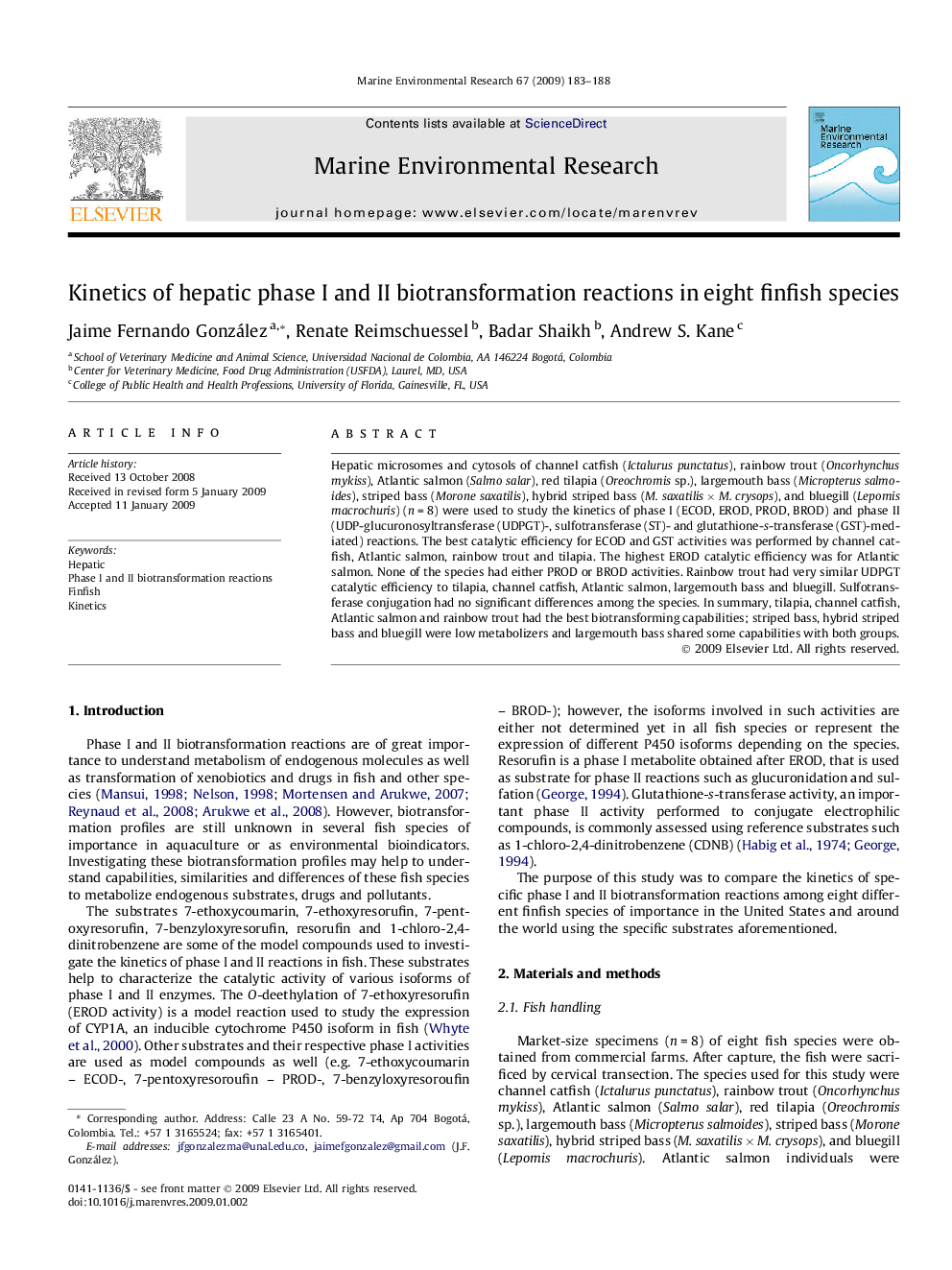| Article ID | Journal | Published Year | Pages | File Type |
|---|---|---|---|---|
| 4551403 | Marine Environmental Research | 2009 | 6 Pages |
Hepatic microsomes and cytosols of channel catfish (Ictalurus punctatus), rainbow trout (Oncorhynchus mykiss), Atlantic salmon (Salmo salar), red tilapia (Oreochromis sp.), largemouth bass (Micropterussalmoides), striped bass (Morone saxatilis), hybrid striped bass (M. saxatilis × M. crysops), and bluegill (Lepomis macrochuris) (n = 8) were used to study the kinetics of phase I (ECOD, EROD, PROD, BROD) and phase II (UDP-glucuronosyltransferase (UDPGT)-, sulfotransferase (ST)- and glutathione-s-transferase (GST)-mediated) reactions. The best catalytic efficiency for ECOD and GST activities was performed by channel catfish, Atlantic salmon, rainbow trout and tilapia. The highest EROD catalytic efficiency was for Atlantic salmon. None of the species had either PROD or BROD activities. Rainbow trout had very similar UDPGT catalytic efficiency to tilapia, channel catfish, Atlantic salmon, largemouth bass and bluegill. Sulfotransferase conjugation had no significant differences among the species. In summary, tilapia, channel catfish, Atlantic salmon and rainbow trout had the best biotransforming capabilities; striped bass, hybrid striped bass and bluegill were low metabolizers and largemouth bass shared some capabilities with both groups.
